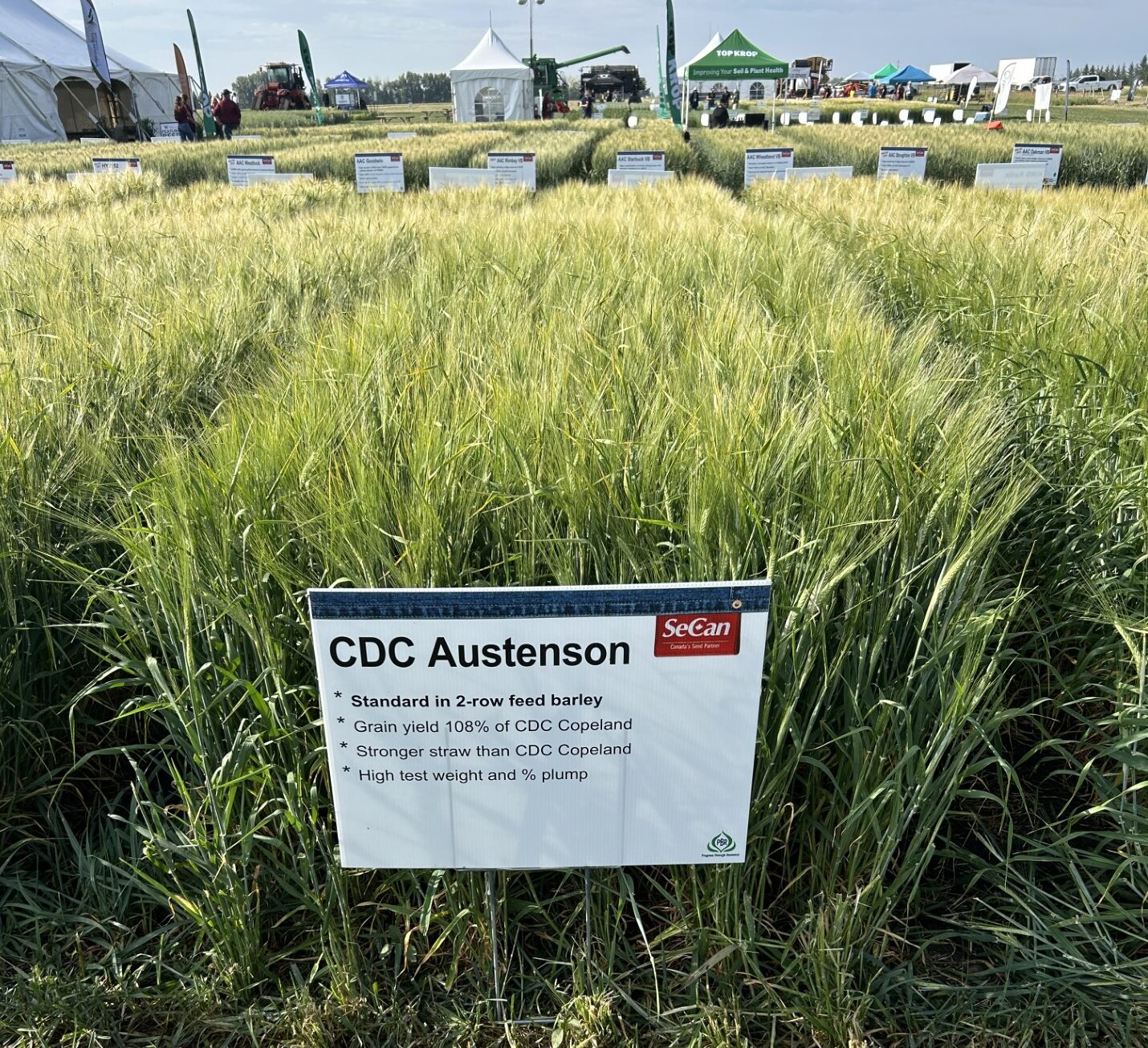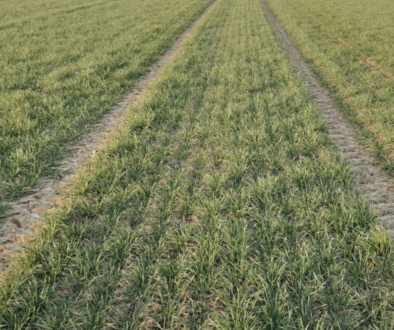Unlocking Barley’s Potential: New Varieties and Advances in Plant Breeding
Dr. Aaron Beattie, Plant Breeder at the University of Saskatchewan’s Crop Development Centre (CDC) presented at BarleyBin LIVE at The Dam Smokehouse in Nipawin, SK in December 2024. This is a summary of that discussion. Watch the full recording here.
Find a list of up-and-coming malt and feed barley varieties at the end of this article.
Barley farmers in Saskatchewan have long understood the importance of innovation in staying competitive and resilient. With new challenges in climate, pests, and market demands, advancements in barley breeding offer exciting opportunities to improve yields, enhance malt quality, and develop varieties that stand up to environmental pressures. Let’s dive into some of the latest developments shaping the future of barley production.
Mapping the Barley Genome: A Game Changer
The foundation of modern plant breeding lies in understanding the barley genome. Back in 2012, the first sequencing of a barley variety, Morex, opened the door to unprecedented precision in breeding. Today, with 75 barley genomes sequenced, breeders have a vast library of genetic information to draw upon.

This knowledge helps researchers identify which genes control critical traits, from disease resistance to protein content. By pinpointing the exact location of these genes, breeders can reduce the margin of error in selecting lines with desired traits. For example, genetic markers for scald resistance have become much more reliable, cutting down the need for extensive field testing. With this detailed genetic map, breeders can focus on creating varieties that are more robust, productive, and suited to Saskatchewan’s growing conditions.
As Dr. Aaron Beattie of the University of Saskatchewan’s Crop Development Centre (CDC) explains, “With these genomes, we can start to figure out what genes control what traits. And as a breeder, I can start to incorporate that information into how I do selection. Now my error rate goes down to almost nothing.”
The Role of Gene Editing in Barley Breeding
Gene editing, particularly with tools like CRISPR, has generated significant interest in the agricultural community. This technology allows researchers to make precise changes to the barley genome, potentially improving traits like disease resistance or drought tolerance. However, as Dr. Beattie points out, “Gene editing is just a tool, and it’s not a magic solution. It’s most useful for traits controlled by one or very few genes, like some diseases or quality traits. For more complex traits, like yield or Fusarium head blight resistance, gene editing is less effective.”
Additionally, public perception and regulatory frameworks remain challenges. “In the science community, we may feel there are meaningful differences between a genetically modified organism and something that’s been gene-edited. But consumers don’t always see it that way,” Dr. Beattie notes.
New Barley Traits in the Pipeline
One of the most pressing issues for malt barley growers is pre-harvest sprouting (or chitting). High-enzymatic varieties like AAC Connect and CDC Fraser are particularly susceptible, leading to significant losses during wet harvest conditions. Breeders are working to combine high malt quality with improved sprouting tolerance. Promising new lines in cooperative trials may soon provide a solution, offering growers better protection without sacrificing malt quality.
Read: Chit happens: Understanding pre-harvest sprouting challenges and future solutions – The Barley Bin
Dr. Beattie highlights the progress being made: “We have material in the co-ops that looks like it’s captured that combination of traits. Down the road, when we’ve had our fill with the current set of varieties, this would be the next one to entice growers.”
Another area of focus is creating feed barley varieties that outperform CDC Austenson, the longstanding leader in the feed market. Emerging lines are being evaluated for yield, disease resistance, and adaptability, with the goal of providing farmers with more profitable options.
Watch: CDC Durango, a High-Yielding Feed Barley Replacement for CDC Austenson | SeCan

CDC Austenson barley plot at Ag in Motion. Photo courtesy of SeCan.
Read: CDC Austenson has Earned the Seed of the Year Award – Seed World
How New Varieties Are Developed
Developing a new barley variety is a long process, typically taking 10 years from initial cross to commercialization. The journey involves rigorous testing across Western Canada to ensure new lines meet high standards for agronomy, disease resistance, and malting quality. Only varieties with proven merit—meaning they outperform current options—make it to market.
“It takes about six years for a line to make its way from initial cross to the point where I start getting excited,” Dr. Beattie shares. “By year five, we’re getting early yield and adaptability data, but it’s still early days. More often than not, subsequent years of testing show us it wasn’t as good as we hoped.”
What’s Next? New Barley Varieties Available Now
For Saskatchewan barley farmers, the future looks bright. Advances in breeding tools, such as genome sequencing and gene editing, are unlocking new possibilities. Promising new varieties, including those with improved sprouting tolerance and enhanced malt quality, are starting to come to market. Here are some promising up-and-coming malt barley varieties featured on the Canadian Malting Barley Technical Centre’s (CMBTC) Recommended Variety List for 2025-26:
- AAC Connect: Two-row malting barley | Distributed by Canterra Seeds
- CDC Fraser: Two-row malting barley | Distributed by SeCan
- CDC Churchill: Two-row malting barley | Distributed by SeCan
- AAC Synergy: Two-row malting barley | Distributed by FP Genetics
- CDC Copeland: Two-row malting barley | Distributed by SeCan
Meanwhile, feed barley growers can look forward to alternatives that challenge the dominance of CDC Austenson. Here are some new feed and forage barley varieties available in 2025:
- AAC Lariat: Two-row feed barley | Distributed by Canterra Seeds
- AB Wrangler: Two-row feed and forage barley | Distributed by Canterra Seeds
- CDC Durango: Two-row feed barley: Distributed by SeCan
- CDC Renegade: Two-row, smooth-awned forage barley | Distributed by SeCan
- AB Advantage: Six-row, smooth-awned feed & forage barley | Distributed by SeCan
As these innovations make their way into farmers’ fields, the focus remains on creating barley varieties that are not only productive but also resilient and market-ready. Stay tuned to BarleyBin.ca for updates on emerging lines, field trial results, and industry insights to help you make informed decisions for your farm.





